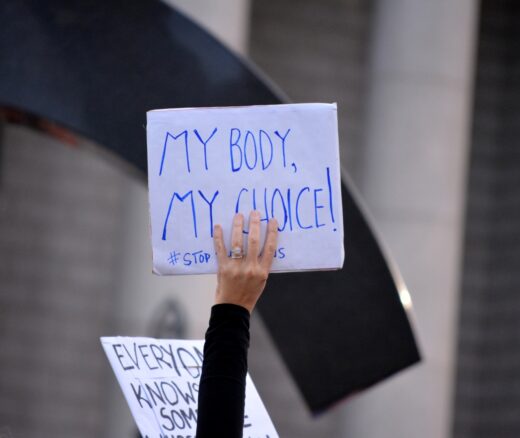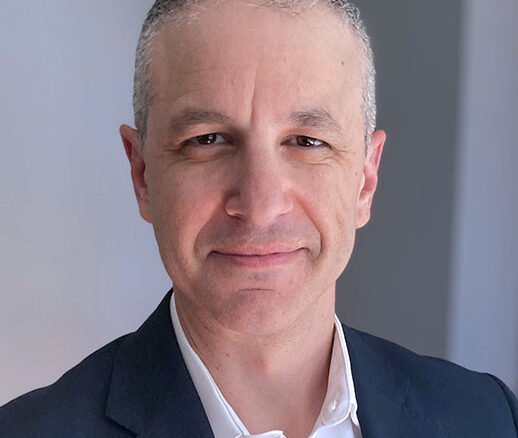
The Unseen Fallout of Abortion Bans
How Threatened Reproductive Rights Pushed More Pennsylvanians Toward Sterilization
News
Can the already strained Medicaid system withstand an $880 billion budget cut over the next ten years and still provide all the services needed by the low-income population of patients it was designed to serve? That question was central to the April 4 “Understanding the Health and Fiscal Impacts of Medicaid Policy Proposals” virtual seminar convened by the University of Pennsylvania’s Leonard Davis Institute of Health Economics (LDI).
The session opened with a set of sobering statistics. According to the Centers for Medicare & Medicaid Services (CMS), more than 72 million Americans are currently enrolled in Medicaid—making it the nation’s largest health insurance program. (Medicare, by comparison, covers more than 68 million.)
Medicaid plays a dominant role in U.S. health care. It covers 40% of all children and childbirths, 60% of all nursing home care, and all federal spending on home- and community-based services. It is also the largest single funder of behavioral health treatment, including services for substance use disorders, and the largest source of health coverage for adults living with HIV. Combined federal and state spending on Medicaid amounts to roughly 20% of total U.S. health care expenditures.
About 40% of Medicaid beneficiaries are white; the remainder are from racial and ethnic minority groups—underscoring the program’s critical role in delivering health coverage to America’s most diverse and vulnerable communities.
According to Washington’s Economic Policy Institute, the Medicaid budget cuts would help fund an extension of the first Trump Administration’s 2017 Tax Cuts and Jobs Act (TCJA), which primarily benefits the country’s highest earners.
On Feb. 25, the U.S. House of Representatives narrowly passed the GOP budget resolution instructing the House Energy and Commerce Committee to cut up to $880 billion from Medicaid’s budget. Negotiations around the Senate Budget Committee’s version are now underway.

The LDI seminar brought together an expert panel to examine the long-term consequences of implementing such a drastic reduction in Medicaid funding. Moderated by Rachel M. Werner, MD, PhD, Executive Director of LDI, the panelists included: Valerie Arkoosh, MD, MPH, Secretary of Human Services for the Commonwealth of Pennsylvania, which administers the state’s Medicaid program; Mark Zandi, PhD, Chief Economist at Moody’s Analytics; Adrianna McIntyre, PhD, MPH, Assistant Professor of Health Policy and Politics at Harvard’s T.H. Chan School of Public Health; and Joseph Benitez, PhD, Assistant Professor at the Martin School of Public Policy and Administration, University of Kentucky.
“Large-scale reductions to federal Medicaid spending would have far-reaching consequences for state budgets, for the broader economy, and the health and well-being of Medicaid enrollees,” said Werner.
Arkoosh, who oversees a Pennsylvania Medicaid system that serves three million residents, warned, “These proposed cuts would be catastrophic for every state. The options this would create are relatively straightforward. Fewer people will have health care. There would be more uninsured individuals. Those individuals who do have health care coverage would have fewer benefits. And our hospitals, doctors, nurse practitioners, and other providers would be seeing much larger numbers of individuals who require uncompensated care.”

Among the potential cuts addressed by the panelists were a reduction in the amount of the federal government’s Medicaid match rate paid to each state annually, the introduction of work requirements, a switch to the use of block grant funding, and curbing the use of state provider taxes.
Medicaid is jointly funded by the federal government and each state, with the exact percentages varying widely by state according to a complicated formula called the Federal Medical Assistance Percentage (FMAP). For instance, in Pennsylvania, the state pays 44% of Medicaid costs while the federal government pays 56%. Massachusetts is 50% state/50% federal. Mississippi is 25% state/75% federal. Then, within each state there is a variation between the long-term traditional FMAP-covered population and the special Affordable Care Act Medicaid expansion population, for which the federal government pays 90% and the states pay 10%.

One potential cut the federal government could make would be to eliminate the 90%/10% special rate for the expansion program. The Centers for Medicare & Medicaid Services (CMS) estimates that more than 20 million people are currently covered by the 90%/10% arrangement. At the same time, the federal government could alternatively or simultaneously lower its traditional FMAP contributions to states. Either or both tactics would create massive budgetary problems for states.
“The states’ options are somewhat limited in the face of major cuts,” said McIntyre. “They could put up their own state dollars, but that might be increasingly difficult in the current economic environment. Or they could find ways to reduce the number of people who are covered by Medicaid, either changing eligibility criteria or introducing administrative burdens that make it harder for people to stay enrolled. Or they could reduce payments to providers.”

The first Trump Administration encouraged states to apply for Medicaid waivers to impose a requirement for potential enrollees to prove they were continually engaged for 80 hours a month in a job, community services, or educational activities to be eligible for Medicaid. Thirteen states sought and received federal waivers to do this, but only two—Arkansas and Georgia—actually implemented the restriction. Arkansas’ program ended after a federal court ruled it unlawful. Georgia’s program continues.
“Work requirements create a barrier for people who might otherwise use Medicaid as a safety-net program,” said Benitez. “There’s not a lot of evidence in the literature to suggest that Medicaid work requirements actually increase labor market participation. What we do know is that they are associated with loss of coverage and disruptions among people trying to get needed care or avoiding or delaying needed care because of cost. They are also associated with increases in medical debt that people might not have otherwise experienced had they been able to maintain their Medicaid coverage.”
“I never understood this ‘work requirements’ thing,” said Zandi. “If you look at Medicaid recipients under the age of 65 who don’t receive disability benefits, their labor force participation rate is exactly equal to the rest of the labor force. So, exactly what problem are we trying to fix here? If you consider all the administrative costs involved in running programs like this, it seems like just a big waste of time.”
McIntyre agreed and characterized work requirements as “a solution in search of a problem.”

Medicaid is an open-ended entitlement program. Currently, the more a state spends within the rules, the more federal money it gets. A shift to block grants would limit each state to a fixed lump sum of money for Medicaid annually. An alternative switch to per-capita grants would limit the state to a set amount of money per Medicaid enrollee. Both strategies shift costs to states and are likely to require states to make cuts in access and care, particularly during epidemics and other emergencies.
“We haven’t seen a detailed proposal on this yet,” said McIntyre. “Past proposals for this same thing have had one per-capita amount for older enrollees, and different ones each for expansion adult enrollees, disabled enrollees, and children. Operationalizing such a system is more complicated than it sounds.”
A little-discussed but crucial element of state Medicaid funding is the provider tax. States levy a tax of generally up to 6% on hospitals, nursing facilities, intermediate care facilities, managed care organizations, ambulance providers and others to generate revenue used to fund the state’s portion of Medicaid costs. This money must then be matched by the federal government according to that state’s FMAP rate. It’s estimated that 15 to 20% of states’ Medicaid funding is raised through provider taxes. Proposals currently under Congressional consideration would reduce or restrict states’ ability to collect these taxes, thus lowering the amount states would have available to cover Medicaid costs and simultaneously lowering the amount the federal government would have to match.
“In theory, curbing provider taxes would be just another cost shift to the states and, in theory, would save money for the federal government,” said Arkoosh. “But it would put an enormous burden on the states, and I think it would be quite difficult for just about any state to fully make up for that lost amount.”
Arkoosh went on to point out, “The impact of such cuts, not just in terms of human cost, but in terms of all the institutions providing these services, would be devastating. Medicaid runs so lean—the administrative costs are like 3.9%, and no commercial insurance comes close to that low of an administrative cost rate.”
“The Medicaid program really punches way above its weight in helping the most vulnerable people,” said Arkoosh. “About half our rural hospitals have a margin of zero or a slightly negative margin. If they need to start providing more uncompensated care, it will be the death knell for them. And when a hospital leaves a community, often that is the beginning of the end of that community. It’s very hard to attract new businesses and young families to a community that doesn’t have a hospital. Health care is just fundamental to thriving communities. Our families can’t be stable without it.”
As the session came to a close, Werner asked each of the panelists what message they would like to give to federal policymakers deliberating on the legislation related to this issue. These are their answers:
Benitez: “Cutting Medicaid has spillover effects that could increase the need for more government spending in other areas. Medicaid allows people to stay healthy. When they’re unhealthy, they often cannot work or care for themselves or their families in ways that put their families in need of other government services and supports.”
McIntyre: “Medicaid is part of the core fabric of the U.S. health care system. The idea that cuts can be targeted to a specific Medicaid population is something of a fallacy. We all rely on the same doctors and hospitals, so if cuts to Medicaid hurt those doctors and hospitals, there’s going to be a ripple effect for the rest of us as well.”
Zandi: “I’m very aware that the nation has some very deep fiscal problems that need to be addressed. But in the large list of things we can think about to adjust on the revenue or spending sides, I would put Medicaid at the bottom of that list. I get the difficulty of the fiscal issue, but I just don’t think Medicaid is the place you want to go for cuts.”
Arkoosh: “This is about older adults, people with disabilities, and a whole bunch of kids. That’s not a population that lives in a silo. Cuts to these Medicaid programs will impact all of us. For instance, it will increase crowding in emergency rooms because when people don’t have insurance, they have nowhere else to go. You might remember before the Affordable Care Act, insurance premiums were going up much faster because hospitals had no choice but to cost-shift to people who were fortunate enough to have health insurance.”


How Threatened Reproductive Rights Pushed More Pennsylvanians Toward Sterilization

Billing Codes That Flag Food, Job, or Housing Insecurity in Medical Records are Underused for the Sickest Medicare Patients

Promising New Evidence and What’s Next

Abortion Restrictions Can Backfire, Pushing Families to End Pregnancies

With Drastic Cuts on the Table, What’s the Best Way To Fund Medical Innovation – NIH Grants, Prizes, or Bold New Models?

An Analysis of Penn Medicine Healthy Heart Program Provides Insights